
A friend (hi Jess!) recently asked me for this recipe; she's already planning her Christmas presents. I wasn't going to post it here, but realised that aside from the sugar (I haven't yet been brave enough to try replacing it with honey, but a molasses-honey combination might work?) it's a relatively regional recipe. I made them today as a going-away present for another friend, stacked in a coffee tin with the recipe written out on the side.
If you wanted to make them a little more holiday-like, you could try replacing the raisins with cranberries and white chocolate, or peppermint bark. I'd love to hear what kind of edible holiday gifts you like to make—especially from South Africans, as I imagine the usual gingerbread-pumpkin-autumn-spice flavours are less appealing in summertime...?
Michelle's Oatmeal Cookies
Makes 26 7-centimetre cookies
For more details on the regional suppliers mentioned below, click here.
115 g butter, room temperature (visit the Klipfontein stall at Fresh Goods Market)
100 g brown sugar (I used organic rapadura sugar from Divine Foods, which has a slightly stronger flavour and colouring—a lighter brown sugar also works)
125 g white sugar (preferably unbleached; available from Divine Foods)
1 large egg, room temperature
1 tsp. vanilla (Nomu's vanilla paste is great)
1 tbsp. (soy) milk
185 g Eureka cake flour (or all-purpose unbleached flour)
1/2 tsp. salt (Khoisan)
3/4 tsp. baking soda
1/2 tsp. baking soda
1/4 tsp. cinnamon
120 g rolled oats, or 60g if using coconut
50 g unsweetened shredded coconut
85 g raisins (By Nature is available at both Saturday Stellenbosch markets) or chocolate chips
1. Preheat oven to 180C.
2. In a large bowl, cream together the butter and sugars.
3. Beat in the egg, vanilla and milk.
4. In another bowl, stir together the flour, salt, baking powder, baking soda, and cinnamon.
5. Add the flour mixture to the butter mixture. Stir to combine.
6. Add the rolled oats and coconut, if using. Stir. Add the raisins. (It should look like the first picture below.)
7. Roll the dough into 1 tbsp. balls and place at least 4 cm apart on a parchment-lined baking sheet (picture 2). Flatten them slightly with your fingers; they should be at least one-and-some centimetres thick (picture 3).
8. Bake on the oven's middle rack for 10 - 12 minutes, until the edges are just golden. The tops should still look soft, even a little uncooked (picture 4).
9. Leave them on the sheet for about 30 seconds, then carefully slide them onto a cooling rack. Cool fully.

I've never managed to keep these around for longer than a few days, but they'd probably last at least a week in an airtight container, possibly more.
Sunday, November 7, 2010
Oatmeal Cookies
Monday, November 1, 2010
Happy Halloween!

It's not a very regional holiday, but we really enjoyed these "Spooky Ghost Meringues" (I used raisins from By Nature for the eyes instead of candy sprinkles). Other early-spring Halloween stand-ins...

...ghoulish white asparagus...

...and—the next best thing to pumpkins—bright yellow baby gem squash. Both from the African Potato stand at the Fresh Goods Market.
Posted by Michelle 2 comments
Tuesday, October 19, 2010
Spring in five minutes

My idea of what constitutes ‘easy’, food-wise, is a bit skewed. Food is one of my hobbies, so I don’t mind the laborious process of rolling out tortillas, say, or getting my hands (and hair, and face, and elbows) sticky with cake batter. Some people will always hate spending time in the kitchen, but as a from-scratch evangelist, I prefer to believe that most of us just haven’t been taught to enjoy cooking, or don’t realise how simple and satisfying it can be.
We’ll get to you-all in the second group later. But this, I think, is the perfect regional meal for the hate-to-cook crowd.
Poached eggs are great; fussing with strainers and vinegar and those tiny, hot whirlpools is not. Go for a soft-boiled egg instead: this light tan beauty came from our friend’s flock, so big-bottomed it barely fit inside my eggcup. Asparagus dabbed with butter—have I mentioned how hard I’ve fallen for this butter? Once you’ve gotten used to its fine pale shade, the others look garishly coloured—takes the place of toast soldiers for dipping.
That’s lunch (or dinner, or…) in five minutes.
A reasonably reliable method of achieving soft-yolked goodness:
In a small pot, completely cover the egg with cold water. When it comes to a roiling boil—the bubbles should be big and audibly knocking the egg about—start a timer for 2:15 (that’s minutes and seconds, for a small egg) and 2:30 (for a large one). Remove from the water and slice the top off after thirty seconds or so. Eat immediately.
Our pot has a little steamer that sits on top, so I just place the asparagus overtop the boiling water for 1:30 or so. If you don’t have one, you could always boil them in the same water or steam them in the microwave for a short time.
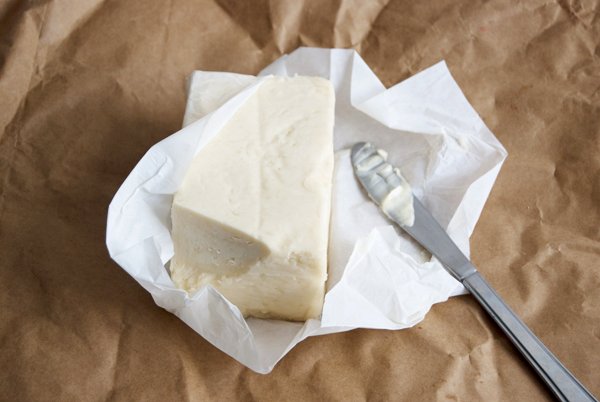
Monday, May 10, 2010
Daily Bread

Katrin and I have grown very depressed about the state of supermarket bread. The loaves are always too damp, prone to mould and require heavy-duty toasting. Unpleasant! Googling “easy brown bread loaf” yielded this excellent recipe—one of the simplest breads I’ve ever made, with a good crust and sturdy yet springy crumb. Perfect for sandwiches, ideally the open-faced variety: try sharp cheddar with quince chutney, or cream cheese, sliced tomatoes and caramelised onions.
(I also recently tried Jim Lahey’s no-knead bread, but this one was far and away the winner—mostly because you don’t need to futz around with preheating dutch ovens or wait 12 hours for the dough to rise.)
Very easy brown loaf
Adapted from Lindsey Bareham in The Times
1 tbsp mild vegetable oil
1 tsp honey (or brown sugar, or molasses)
10g dried yeast
425ml warm water
225g whole-wheat flour (Josephine Mill)
225g white bread flour (Eureka Mills)
1 tsp salt (Khoisan Trading Co.)
13 x 20 cm loaf tin
Generously oil the loaf tin. Stir honey into 150ml of the water, then add the yeast. Leave several minutes to grow foamy. In a big bowl, mix together flours and salt. Create a well in the middle, add the yeast water and the plain water, and quickly stir to make a sticky, wet dough. Do not knead; simply scrape into the prepared loaf tin. Allow to rise for 1 ½ - 2 hours, or until the dough has risen almost to the top of the tin. Half an hour before the dough is ready, preheat the oven to 220C. Place inside the oven and bake for 50 – 60 minutes, until the top is dark brown and the base sounds hollow when tapped. Cool on a wire rack. Make sandwiches galore.
Posted by Michelle 1 comments
Sunday, May 9, 2010
Market diary, and a cake

Decisions, decisions: a supermarket egg and one from Jess' flock.
Developing a regional diet involves planning and adjusting to new rhythms—or so I hear. As Anri pointed out, real life has a bad habit of getting in the way of our goals and I didn't make many changes last week. Never mind: this project is about taking responsibility, not feeling guilty (a useful distinction made by Alisa Smith and James Mackinnon in their book Plenty).
Let's try instead for small changes in routine that might lead to big changes in diet. Rather than stopping by the supermarket after school on a weekday, my new plan is to buy as much as possible at the Stellenbosch Fresh Goods market, plan a weekly menu around those purchases, and then fill in the gaps at the supermarket on Monday.
My best market tip: arrive early if you intend to do a proper shop. Vendors are more likely to indulge cotton-brained interrogations (Where's this from? Wellington? Is that, like, within 250 kilometres of Stellenbosch? What do you mean by free-range?) and you’ll avoid the well-heeled masses.
The extremely helpful gentleman at the By Nature stand (083 658 3998; info@bynature.co.za) told me exactly where all his dried fruits, nuts and grains were from. Shame I’m geographically incompetent—next time, I’ll pack a map (or a South African roommate). In any case, the peaches, figs, raisins and almonds (60 rand for 500g) are all grown and processed nearby; he also said that clients wanting bulk packaging could call ahead of time.
Two wedges of Anura Farms Forest Hill Brie and Camembert were a steal at 30 rand—the vendor told me that they were produced about 20 km away, and said the cows are free-range (I'm not sure if there are set standards or certification for "free-range" here; this may involve a little extra legwork on our part).
I haven't quite adjusted to the season reversal—autumn in May keeps tricking me into thinking that Halloween is just around the corner—so the gleaming stalks of pinkish green rhubarb from Talbough were a fantastic surprise. Done and done.
Another friendly vendor at Oded's Kitchen (based in Mowbray; info@odeds-kitchen.co.za) had little trouble talking me into buying some quince chutney—not 100% regional, but the quinces were from Franshoek, and he said Oded's felt very strongly about using organic local products wherever possible. He was also something of a quince historian, so those of you wanting to know more about this mysterious (to me, at least) fruit should feel free to ask.
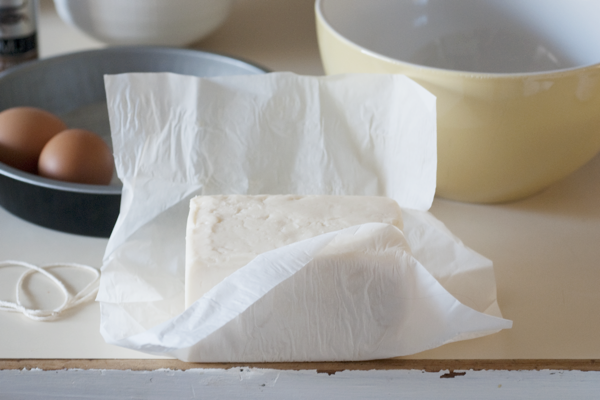
The real highlight was finding free-range butter; the kind lady from Klipfontein also sells eggs and butter from her neighbour's farm. Truly, there are few things lovelier than pale butter wrapped in thin parchment and bound with a single knot of string. I don't know if your food ever talks to you, but this beauty was singing Orange Almond Gâteau de Mamy to me all morning.
So this is what it's all about: meeting people, feeling closer to your food and making cake.
Almond Cake with Roasted Rhubarb
Gâteau de Mamy adapted from Chocolate & Zucchini; roasted rhubarb from Orangette.
Everything in the cake except for the sugar was regional. I could have used lime zest instead (try the brand new Jem & Jess organic lime stall, or call 083 677 9007) but I wanted something to complement the tart rhubarb. If you plan cleverly and prepare the rhubarb first, you can bake both at the same time and save a little power.
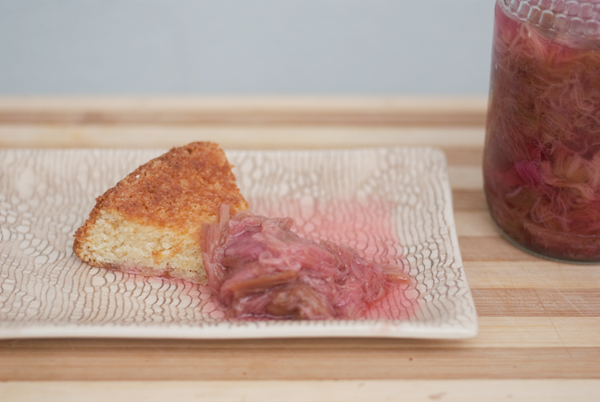
For the cake:
25g finely ground almonds
55g cake flour (Eureka)
7g baking powder
Pinch of salt
150g sugar
2 eggs at room temperature
1 tsp orange zest (or lemon; optional)
125g butter, melted
1 20 or 25cm round cake tin, buttered and lined with parchment
Set oven rack to the lowest third, and preheat to 180C. Beat together the eggs and sugar. In a separate bowl, whisk together the ground almonds, flour, baking powder and salt. Add the flour to the egg mixture and stir until combined; add the butter and stir until combined (don't worry if it looks like an oily mess at first: it will come together). Pour into the cake tin and bake for 25 - 35 minutes (depending on the size of your tin - a skewer or knife inserted in the middle should come out quite clean). If the top looks as though it is browning too much while baking, cover it with aluminum foil. Cool completely on a rack.
For the rhubarb:
900g rhubarb
100g sugar
125ml white wine
1 teaspoon vanilla paste (or 1 vanilla pod, split)
Set oven rack to the lowest third, and preheat to 180C. Clean and trim the rhubarb, then cut it into pieces about 5cm long. Place in a dutch oven or other heavy ovenproof dish and add sugar, white wine and vanilla paste/pod. Stir. Bake for 30 minutes or so, stirring it halfway to ensure even baking. Serve warm or cool, dolloped over the cake. Refrigerate any leftovers.
Wednesday, May 5, 2010
Regionalizing on the move
In an ideal world, I would have been able to dedicate all my time towards converting my diet to a regional one. However, this week and the next I'm on a course where I get to spend eight hours of my day in a classroom, learning about system dynamics. I'm hoping that the course is going to improve my understanding of the food economy as a system, so that I can suggest more useful interventions and adjustments for making it more sustainable. I leave our little home at 7h30 in the morning and arrive home anywhere between 17h30 and 19h00. Welcome to the real world. And I guess this is the way it is for most people. This got me thinking that the challenges of sourcing food regionally are perhaps not limited to only identifying regional suppliers, there is also our daily must-do lists to deal with before we can focus on anything else.

Perhaps the best solution would then be to work with what we have and seeing that this week is dedicated to making regional food happen on the move, I will focus on the places were we have lunch during the week. The supply chains of "lunch providers" could be tweaked to source food regionally. Initiatives dedicated to this concept are often referred to as "farm-to-fork" programs. Institutions like schools and hospitals, office parks and restaurants commit to sourcing food regionally. Their menus are therefore adapted to the seasons and to whatever food is grown regionally.
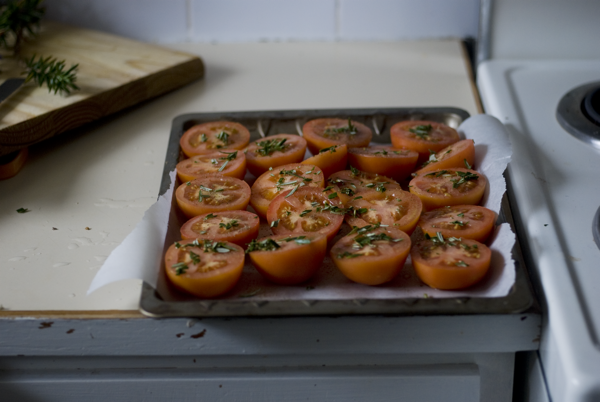
10 tomatoes (from Eric's farm)
Posted by Anri 0 comments
Labels: Recipes
Thursday, April 29, 2010
Our first recipe: Banana cake with a cinnamon-sugar crust
Bananas obviously aren’t regional, but they are in season and by my (admittedly slapdash) calculations, this cake turned out 55.5% regional. Since this blog is about making gradual changes towards sustainable eating, halfway seems like a fine place to start.
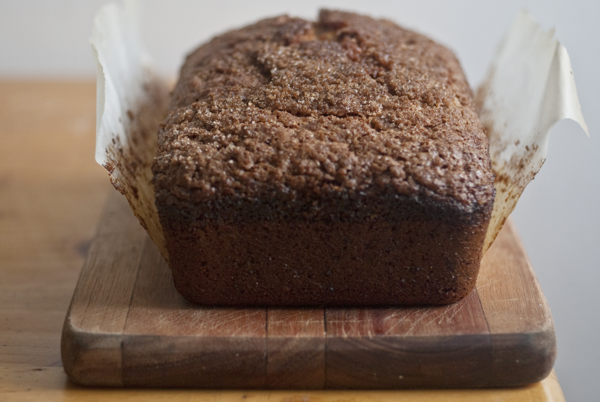
You don't have to be a cross between Marie Curie and Harry Potter to turn eggs, flour and sugar into something gloriously edible. This is particularly true of banana cakes, which are among the most stable of baked goods—it’s unusual for them to crack, fall or rise wonkily (the technical term), and they tolerate a fairly wide range of oven temperatures. They’re also the perfect solution for the spotty, neglected bananas haunting your fruit bowl.
The first time around, I overfilled the pan; as the cake rose, a large quantity of molten batter escaped and dripped all over the oven, filling my apartment with the unappetizing aroma of a culinary Krakatoa (or Eyjafjallajokull). No matter—the cake was still wickedly scrumptious and disappeared in fifteen minutes flat.
Banana cake with a cinnamon-sugar crust
Adapted from Orangette
Regional ingredients included: cake flour from Eureka Mills, Fair Cape plain yogurt (you might be interested in The Aspirant Locavore's review of their Durbanville farm), regional honey from Divine Foods and olive oil from a friend's farm. I've since acquired some super-local free range eggs (thanks Jess!), but I'm still on the lookout for bulk honey and regional canola oil to bring down the cost.
This cake has a very light texture and the banana flavour is relatively mellow. If you’d prefer a more pronounced banana taste, you can swap out the yogurt for an extra banana.
A word on pans: I’ve used the traditional 8 x 10 loaf tin, which takes about 55 minutes to bake, and the overfilled bundt pan was done after 50 minutes. If you have two 8-inch round cake tins, you could use those; they shouldn’t take much longer than 25 – 30 minutes (I’m going to try this soon and report back). Use what you’ve got and keep an eye on the oven.
1 ½ cups (270g) cake flour
¾ cup (130g) sugar (I've used both brown and white)
1 teaspoon cinnamon
½ teaspoon salt
1 teaspoon baking soda
½ teaspoon baking powder
2 eggs
2 bananas, mashed
¼ cup (60ml) plain yogurt
¼ cup (60ml) honey
½ cup (125ml) vegetable oil
¼ cup (60ml) water
2 tbsp brown sugar
2 tbsp white sugar
1 teaspoon cinnamon
Preheat the oven to 180°C. In a small bowl, whisk together the flour, sugar, cinnamon, salt, baking soda and powder. In a separate bowl, beat together the eggs, mashed bananas, yogurt, honey, oil and water. Add the dry ingredients to the wet and stir until just combined (overbeating will give it a gummy texture).
Pour the batter into your greased pan—if you decide on a loaf tin, I’d recommend lining it with a single sheet of parchment, with the paper hanging over the edges, so that you can pull the cake out in a single motion. Stir together the sugars and cinnamon and sprinkle evenly over the batter. Pop it in the oven; it’s ready when a knife or skewer inserted in the middle comes out clean. Leave it on a rack until completely cool. Share with friends.





